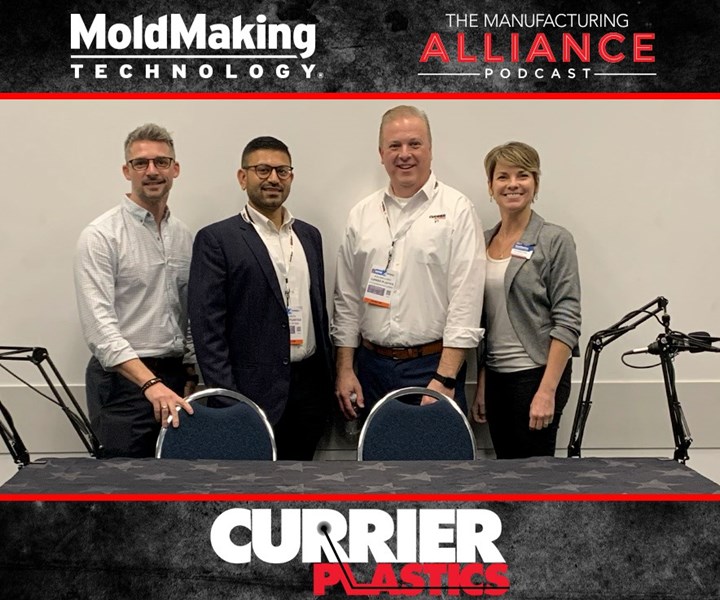PODCAST: Tackling Problems with Relationships and Processes
Currier Plastics’ Ron Ringleben, vice president of business development, and Sriraj Patel, director of research and development, discuss how their company builds relationships and tackles problems for their customers in this episode of The Manufacturing Alliance podcast.
#leadership

In this episode of The Manufacturing Alliance podcast , MoldMaking Technology’s Christina Fuges and Alliance’s Tony Demakis sit down with two employees of Currier Plastics. Ron Ringleben, vice president of business development, and Sriraj Patel, director of research and development discuss how their company builds relationships, tackles problems and rely on processes for their customers.
Here’s just some highlights from their conversation:
- Currier is about the people in the way the company does things in the market. They’re a diverse company in different market segments but are really about how they give an experience to companies in terms of relationships.
- “We've got a lot of different capabilities, but it's real important how we deliver and how we perform.”
- Ron and Sriraj are both part of the leadership team, and they’re constantly talking about the people, the skills and the things they can do for them.
- The company’s recruitment plan not only utilizes social media platforms such as Facebook and LinkedIn, but also an in-house employee referral plan. Since they’re in a smaller county in upstate New York, people who are connected to the company or who work for Currier are connected with a lot of people in the community.
- The ideal customer is someone who gets the best out of Currier’s value. Someone who comes to the company very early on needs help designing and developing. Currier can help them get through that whole process, even if they only have a napkin sketch.
- A a big shift for the company has been adding processes, which all comes from listening to customers and new pain points.
- “If you do something very quickly and it's not done the way that it should be, then it's also not very good. So our objective with is maintaining that balance, making sure that the customer knows that you've received their message, you're working on it, that you have their attention and that you're going to do something about it and keeping them updated.”
- Velocity doesn't necessarily just mean the fastest. It's doing things in the appropriate way, but for Currier, it's driving the culture. It's how the company engages its employees when they first start and then they go through the process of teaching them how to be part of the culture that the team has created.
- “You don't want to treat your customers different than you treat your internal team.”
- Whenever there's opportunities to get people together, it’s a good idea to take advantage of it. Learn how you can incorporate AirBnb to make that happen, just like Currier does!
- In the past five years, projects for the Currier team have become longer due to the types of programs being implemented within the medical industry.
- A large part of a typical day at Currier is tackling solutions to problems, whether it’s something entirely new or something that they’ve worked on in the past.
- It's not about speed. It's about looking at the speed and the value. If it's got to go a little bit slower or go a little bit longer because the value is there, don't cut it off.
- Bringing a positive culture to manufacturing and the environment is important. It's bright and cheery, and it's not on a downward spiral. It's on the rise. Keep growing manufacturing in the U.S.
Listen to this podcast episode here:
RELATED CONTENT
-
Exploring ISO 9000 - Part 16 Control of Quality Records
A Series of International Standards for Quality Management and Quality Assurance. We begin 2022 with a review of Clause 4.16 Control of Quality Records.
-
The Primary Strengths and Weaknesses of the U.S. Economy
Studying, analyzing, and forecasting the North American moldmaking industry for the past 20 years has taught me a lot. It has deepened my understanding of things such as innovation, initiative and industriousness. But the most important thing I have learned, is the meaning of “competition.”
-
Making Quick and Easy Kaizen Work for Your Shop
Within each person is unlimited creative potential to improve shop operations.
.jpg;maxWidth=970;quality=90)




.jpg;maxWidth=970;quality=90)




